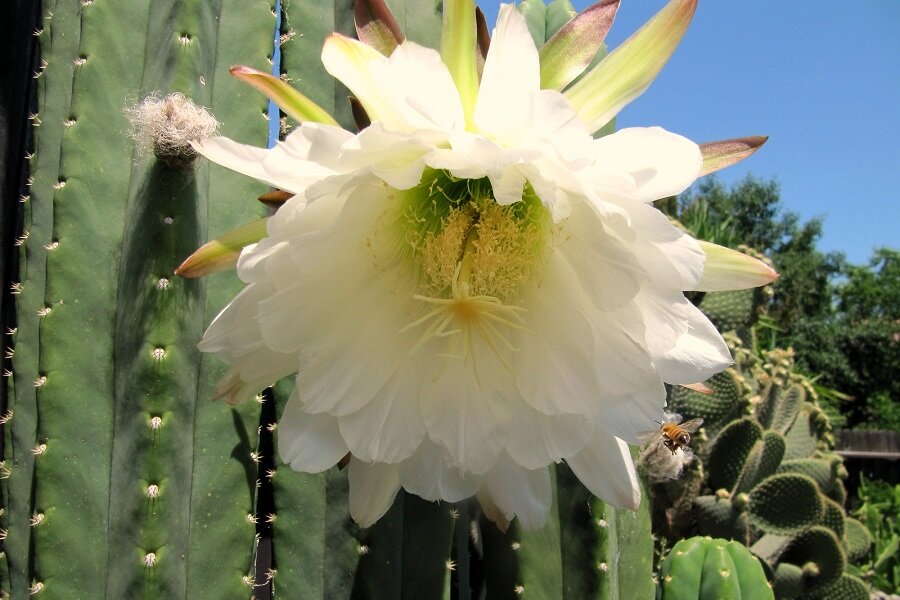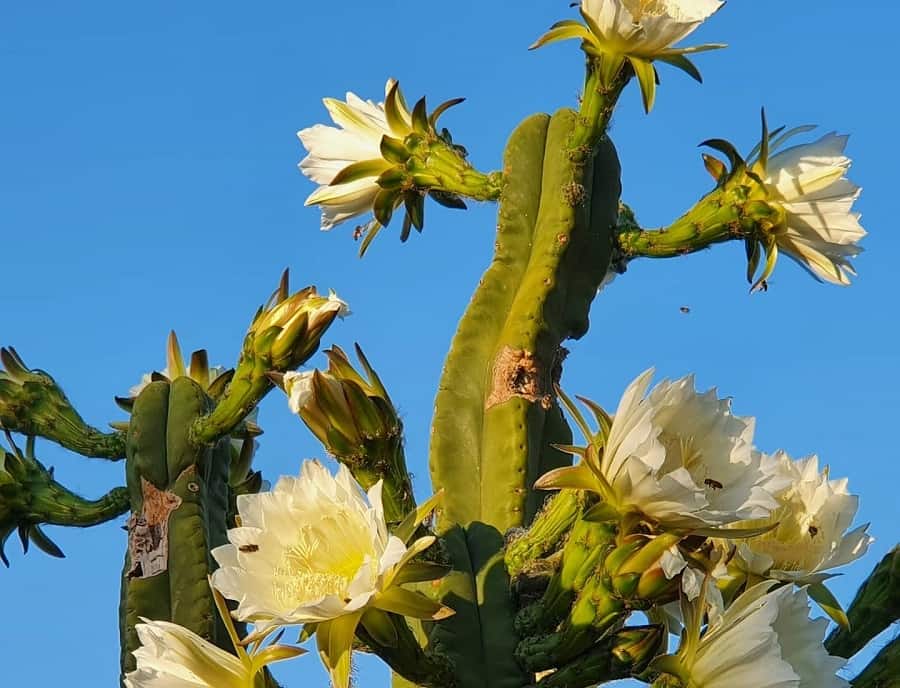Echinopsis scopulicola: Characteristics and Care
Imagine a cactus so unique and intriguing that it demands your attention the moment you lay eyes on it. Meet the Echinopsis scopulicola, a fascinating plant that will captivate you with its peculiar appearance and effortless beauty. Get ready to embark on a journey of discovery as we unravel the secrets of this extraordinary cactus!

Contents
About Echinopsis scopulicola
Native to Bolivia, the Echinopsis scopulicola is a true marvel of nature. It can grow up to an impressive 13 feet tall, boasting a smooth, cylindrical stem adorned with up to 6 ribs. What sets it apart is its lack of noticeable areoles (the spots where spines or hair typically grow on cacti), giving it a remarkably clean and polished look. Even if you spot a few spines or hairs, they’re so inconspicuous that they’ll hardly catch your eye.
This cactus produces stunning white flowers that bloom only at night, adding an air of mystery and allure to its already captivating presence.
Related Post:
82 Types of Echinopsis With Pictures
How To Care For Echinopsis scopulicola
Light
Like all plants, the Echinopsis scopulicola thrives in sunlight, especially during the warm summer months. However, too much direct sunlight can cause sunburn, so watch for discoloration on the edges of the plant. If you notice any signs of burning, reduce sun exposure and provide some shade.
If you live in an area with limited natural sunlight, consider using a grow light. These artificial lights mimic the beneficial rays of the sun, allowing your cactus to flourish even indoors. Position the grow light about 6-12 inches above the plant and leave it on for 12-16 hours per day.

Watering
The watering needs of your Echinopsis scopulicola depend on the season. During the summer blooming period, the plant will require more frequent watering. As temperatures drop in fall and winter, the cactus enters dormancy, so water sparingly.
The frequency of watering also depends on factors like soil type, pot design, and size. A handy trick is to stick a pencil into the soil – if it comes out dry or with minimal moisture, it’s time to water your plant. When you do water, saturate the soil thoroughly by filling the pot until water drains from the bottom.
Soil
Fast-draining soil is ideal for the Echinopsis scopulicola, as water retention can harm its roots and potentially damage or kill the plant. Mix in pebbles to improve drainage and add a top layer of sand to create a well-draining environment.
Since the Echinopsis scopulicola has shallow roots, the pot size isn’t crucial. However, if you plan to grow your cactus directly in the ground, be extra cautious about watering. In areas with extremely low temperatures, the water inside the plant could freeze, which is avoidable when growing in a pot that can be moved indoors.
Fertilizing
During the growing season, you can feed your Echinopsis scopulicola with a balanced liquid fertilizer containing nitrogen, phosphorus, and potassium. Apply the fertilizer two to three times, but avoid doing so during the plant’s dormant period.

Pests and Diseases
Fortunately, the Echinopsis scopulicola is relatively resistant to pests and diseases. Its main enemy is root or stem rot, which is often caused by excessive water retention. Ensure proper drainage in the pot and avoid overwatering to prevent this issue.
How to Propagate Echinopsis scopulicola
Over time, offsets (baby plants) will appear at the base of your Echinopsis scopulicola. These offsets can be carefully removed and propagated to create new plants.
- Identify offsets that are at least 1 inch long growing at the base of the mother plant.
- Using a clean, sharp knife or scissors, cut the offsets off at the narrowest point closest to the mother plant.
- Allow the offsets to dry on a paper towel for a few days until the cut ends have calloused over.
- Prepare a well-draining soil mix similar to what the mother plant is growing in.
- Plant the offsets in the new soil mix, gently firming the soil around them.
- Water sparingly until you see new growth, indicating the offsets have taken root.
- Once established, you can repot the new Echinopsis scopulicola plants into their permanent homes.
With a little patience and care, you’ll soon have new Echinopsis scopulicola plants to admire and share with fellow cactus enthusiasts.
